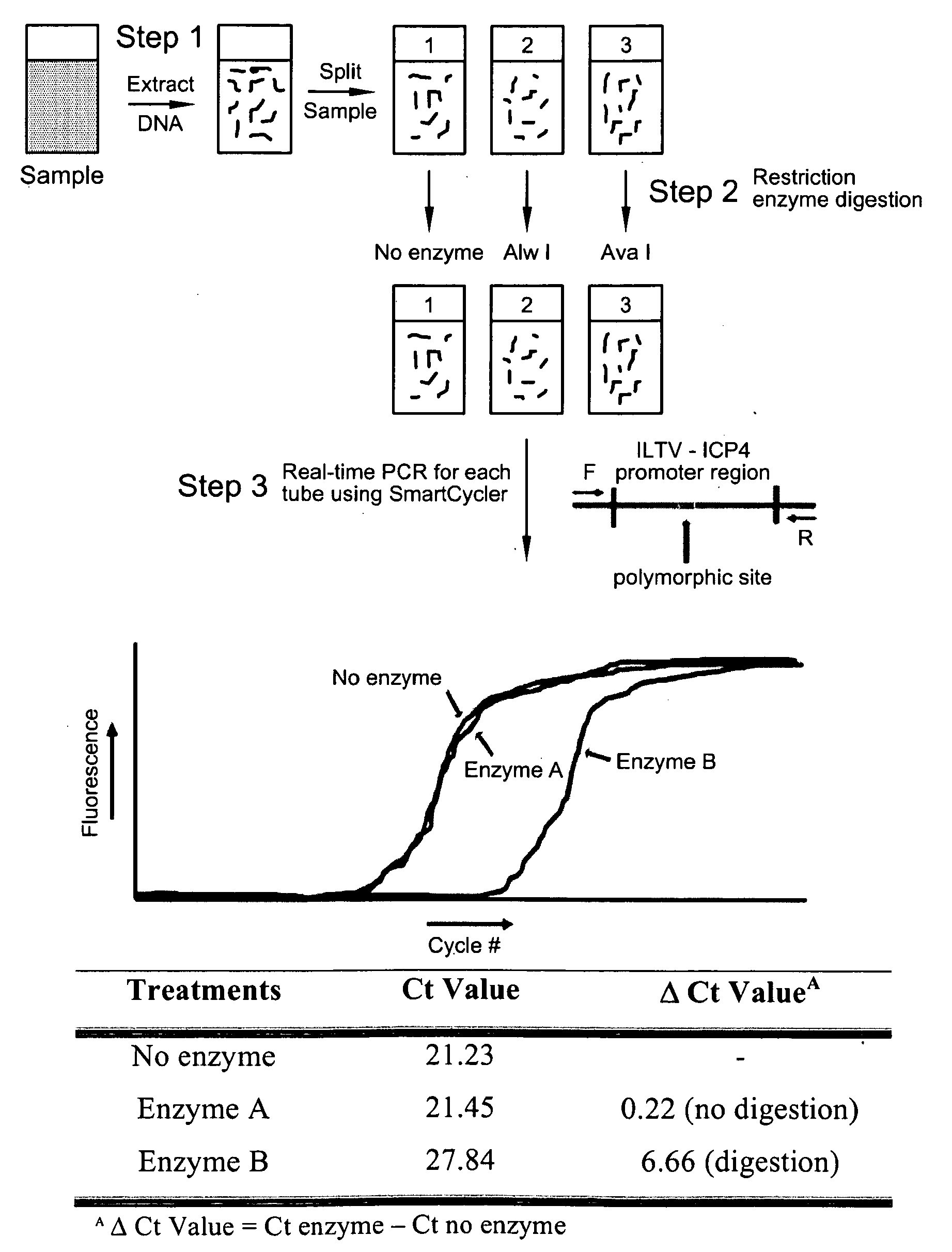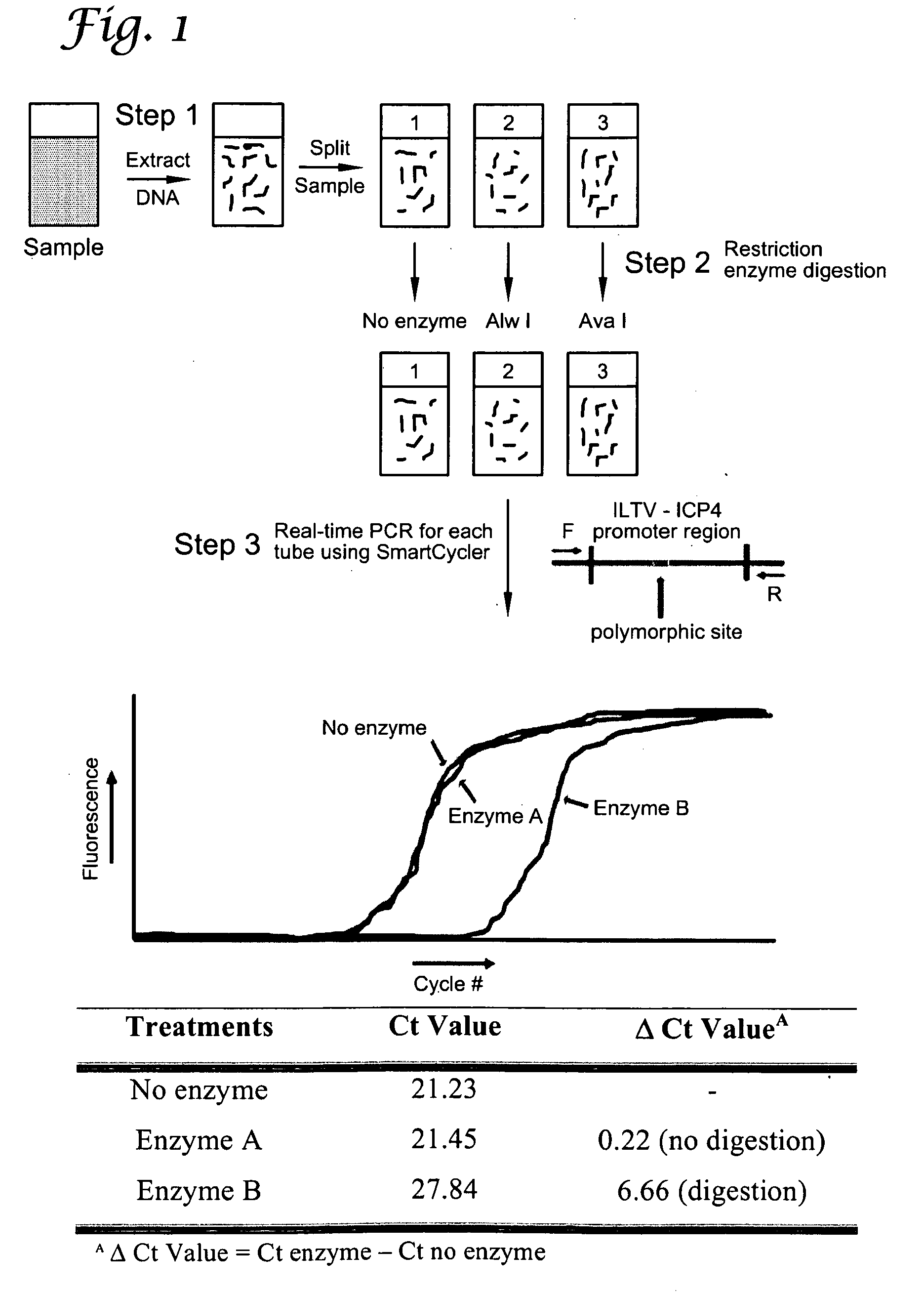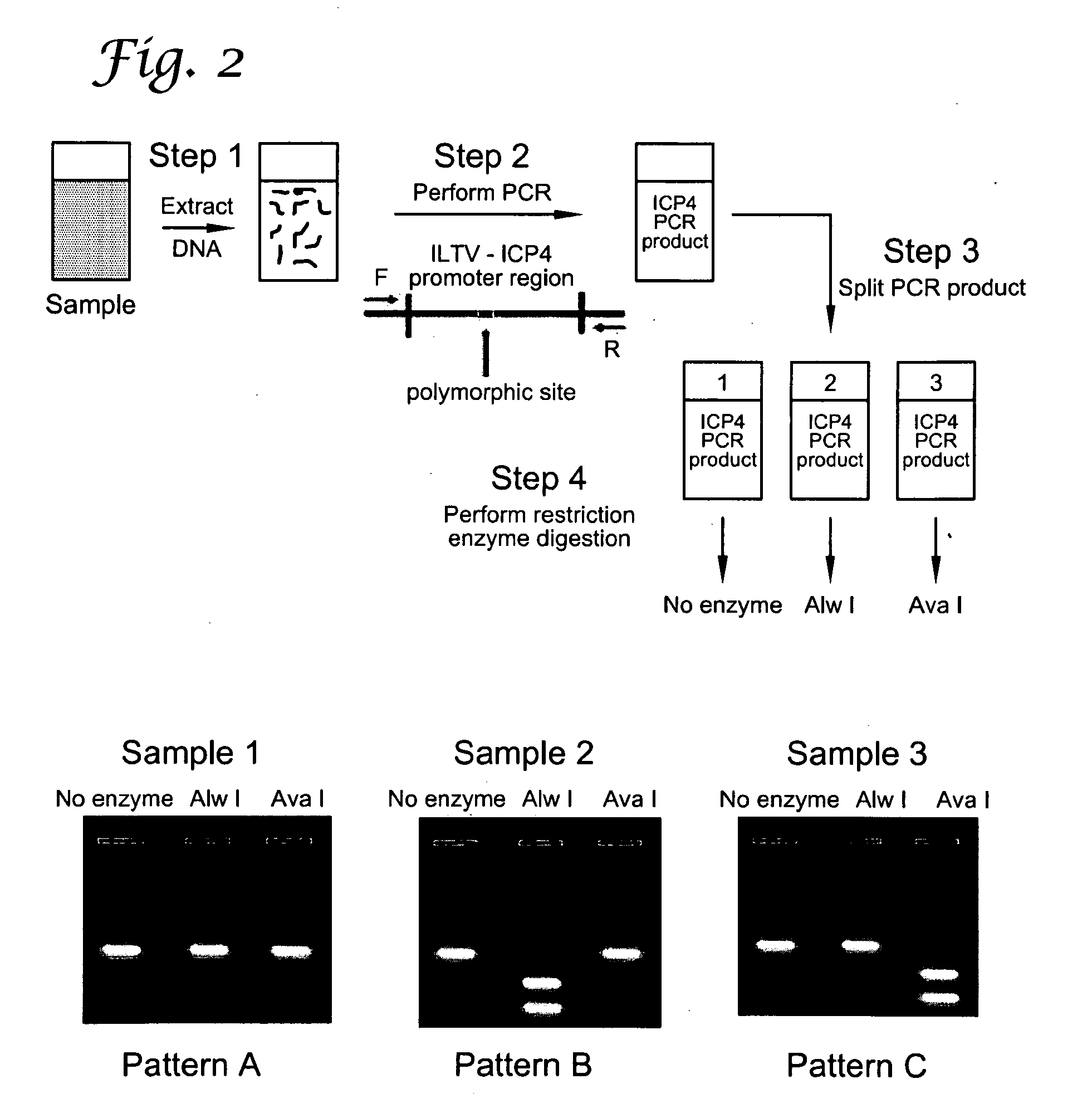Reverse restriction fragment length polymorphism assay and uses thereof
a technology of restriction fragments and polymorphisms, applied in the field of reverse restriction fragment length polymorphism assay, can solve the problems of time-consuming and costly methods for genotyping viral isolates, pcr assays do not give any information about the genotype of iltv in a particular sample, and quantitative aspects are difficult and cumbersome to resolv
- Summary
- Abstract
- Description
- Claims
- Application Information
AI Technical Summary
Benefits of technology
Problems solved by technology
Method used
Image
Examples
example 1
Genotyping Infectious Laryngotracheitis Virus (ILTV) by Multiple Gene Sequencing and Reverse Restriction Fragment Length Polymorphism (RRFLP)
[0072]In this example, the development of a novel Reverse Restriction Fragment Length Polymorphism method for the identification of infectious laryngotracheitis virus genotype is described. In order to understand the Reverse Restriction Fragment Length Polymorphism (RRFLP) assay of the present invention (FIG. 1), it is constructive to compare the conventional Restriction Fragment Length Polymorphism (RFLP) assay for determining viral genotypes (FIG. 2).
[0073]Infectious laryngotracheitis virus (ILTV) is an acute respiratory disease of chickens that affects poultry worldwide. Waves of the disease are observed in US one or twice a year particularly in areas of dense broiler production. In an effort to better understand the origin of these outbreaks typing of outbreak-related isolates has been conducted by multiple viral gene sequencing. The constr...
example 2
Reverse Restriction Fragment Length Polymorphism (RRFLP) Assay: A Novel Technique and its Application for the Rapid Genotyping of Infectious Laryngotracheitis Virus (ILTV) Live Attenuated Vaccines
[0078]Molecular based assays are becoming more common as the standard for diagnostic detection and differentiation of many pathogens. Mainly due to the increased sensitivity, and specificity of molecular assays, real-time PCR has become the forerunner of diagnostic detection methods due to its extreme sensitivity and specificity and multiplex capabilities. First described by Higuchi et al., real-time PCR combines amplification with fluorometric detection of amplicons as the reaction occurs (Higuchi et al., 1993, Bio / Technology; 11:1026-1030).
[0079]Another common molecular technique utilized for the rapid differentiation of specific DNA sequences is the restriction fragment length polymorphism (RFLP). In this method, restriction enzymes are used to digest target DNA (genomic or PCR amplified...
example 3
Testing Stability of the ICP4 Polymorphic Site and Reproducibility of the Reverse Restriction Fragment Length Polymorphism Assay
[0097]In this example, the quality of the novel RRFLP assay was assessed by analyzing the stability of the polymorphic ICP4 site and by examining the reproducibility of the assay itself. In order to evaluate the reproducibility of the RRFLP analysis, two separate experiments with CEO and TCO vaccinated, and vaccine contact exposed chickens were performed.
Materials and Methods
[0098]Animals. Ninety-six white leghorn specific pathogen free (SPF) chickens were obtained from Merial (Gainesville, Ga.) for each experiment. Chickens were housed in stainless steel cages in the isolation room with filtered-air and positive-pressure at the Poultry Diagnostic and Research Center (PDRC, Athens, Ga.), and fed a standard diet and water ad libitum.
[0099]Vaccination Experiments. At four weeks of age, birds were divided in four groups of twenty-four chickens per cage, 12 of ...
PUM
| Property | Measurement | Unit |
|---|---|---|
| Temperature | aaaaa | aaaaa |
| Volume | aaaaa | aaaaa |
| Volume | aaaaa | aaaaa |
Abstract
Description
Claims
Application Information
 Login to View More
Login to View More - R&D
- Intellectual Property
- Life Sciences
- Materials
- Tech Scout
- Unparalleled Data Quality
- Higher Quality Content
- 60% Fewer Hallucinations
Browse by: Latest US Patents, China's latest patents, Technical Efficacy Thesaurus, Application Domain, Technology Topic, Popular Technical Reports.
© 2025 PatSnap. All rights reserved.Legal|Privacy policy|Modern Slavery Act Transparency Statement|Sitemap|About US| Contact US: help@patsnap.com



